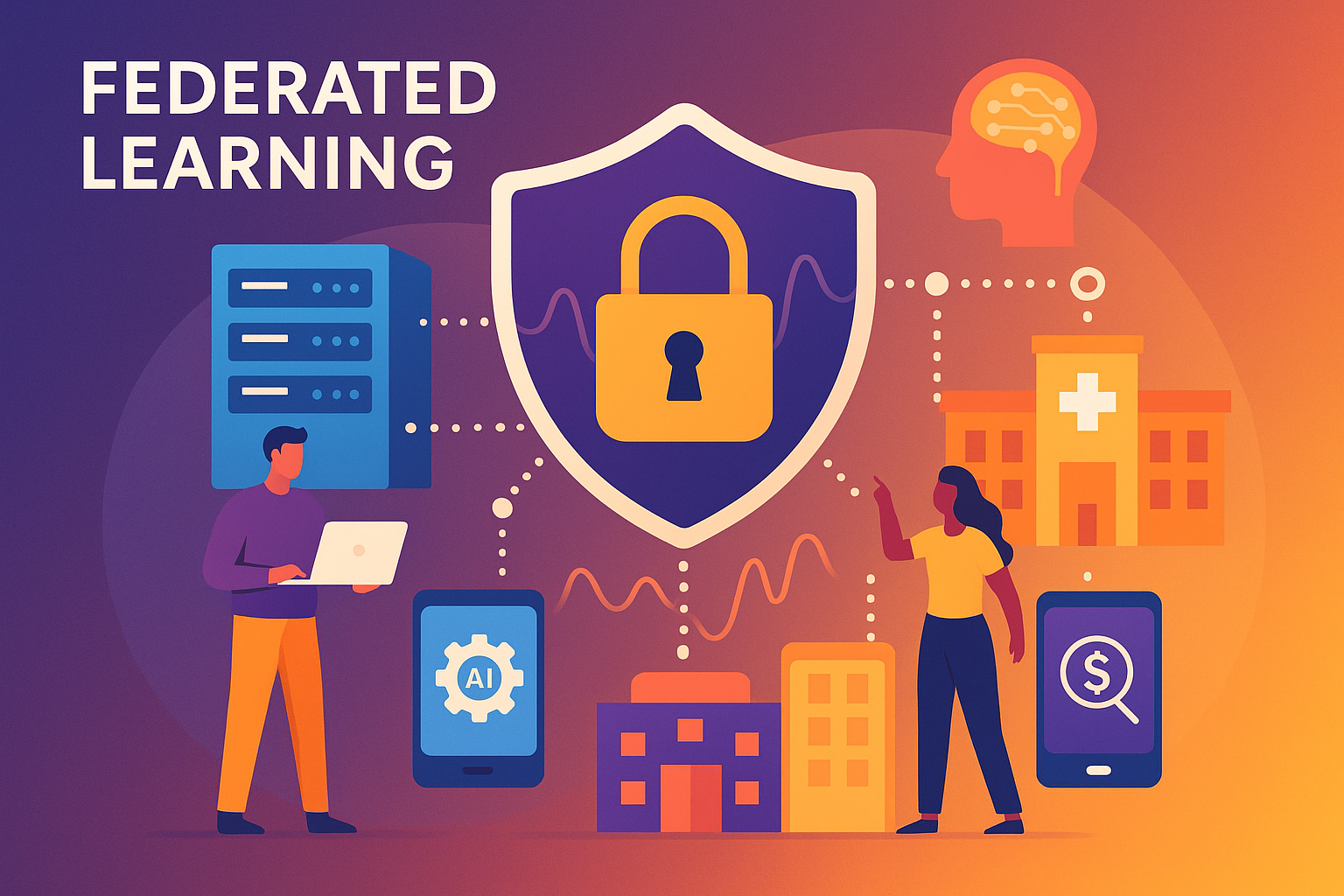
In the age of data privacy, cloud sprawl, and ever-tightening regulatory frameworks, enterprises are grappling with a fundamental tension: how to train AI systems on sensitive or geographically dispersed data without violating compliance mandates or introducing new security risks. Enter Federated Learning (FL), a paradigm shift in machine learning that enables model training across decentralised datasets without moving the underlying data.
What began as a research initiative for improving mobile keyboard suggestions has evolved into a critical innovation for regulated industries like finance, healthcare, and telecom. With federated learning, enterprises are discovering ways to collaborate on AI models, maintain compliance, preserve data privacy, and unlock intelligence at the edge.
What Is Federated Learning?
Federated learning is a decentralised approach to machine learning in which model training happens locally on distributed datasets, often across different organisations, departments, or geographic regions. Instead of aggregating all data into a centralised location (typical in traditional machine learning), federated learning pushes the model to the data, trains it locally, and then only shares model updates (such as gradients or weights) back to a central server for aggregation.
This technique ensures that no raw data leaves its source, significantly reducing risks related to privacy, data sovereignty, or compliance violations.
Why Enterprises Should Pay Attention
1. Data Privacy and Compliance
With regulations like GDPR, HIPAA, CCPA, and various national data residency laws, enterprises face increased scrutiny over how and where they store and process data. Federated learning ensures that personally identifiable information (PII) never needs to be transferred, helping enterprises remain compliant while benefiting from large-scale AI initiatives.
2. Data Gravity and Sovereignty
In many cases, centralising large datasets’s not feasible or economical, especially across multiple regions. Telecom providers, multinational banks, and healthcare providers often have siloed datasets across jurisdictions. Federated learning allows AI to scale across silos while respecting the gravitational pull and sovereignty of local data.
3. Collaborative Intelligence
Federated learning also opens the door to secure, cross-enterprise collaboration. Multiple organisations in the same sector (e.g., banks fighting fraud or hospitals improving diagnostics) can train shared models collaboratively, without sharing the raw data behind their walls.
4. Edge AI and Low Latency
In industries where latency and connectivity are major concerns, such as manufacturing, logistics, and retail, federated learning enables intelligent decision-making directly at the edge. Devices can be trained locally and continuously improve performance while partially or intermittently connected to the cloud.
Real-World Enterprise Use Cases
- Healthcare and Life Sciences: Hospitals in different cities or countries can contribute to a common diagnostic model without sharing sensitive patient data. This has been applied in training AI for COVID-19 detection from X-rays, tumour classification, and genomic analysis.
- Financial Services: Banks can jointly train anti-money laundering (AML) or fraud detection models across branches or affiliates, without violating internal governance or external regulations like BCBS 239 or FATF guidance.
- Telecommunications: Mobile networks can improve predictive maintenance or customer churn models across distributed towers and infrastructure by training at the edge and sending only minimal updates back to the core.
- Retail and Smart Devices: In-store IoT sensors or self-checkout systems can enhance customer interaction models or inventory analytics without uploading sensitive store data to central servers.
Challenges Enterprises Must Address
Despite its promise, federated learning isn’t a plug-and-play solution. Key enterprise challenges include:
- Model and Data Heterogeneity: Data across participants may vary significantly in quality, structure, or distribution. Data’s “non-IID” (non-independent and identically distributed) nature can make model convergence more complex.
- Security Concerns: While raw data isn’t shared, model updates can leak information through sophisticated inference attacks or gradient leakage. Ensuring secure aggregation and differential privacy is essential.
- Infrastructure and Orchestration: Federated learning requires robust device orchestration, secure communication protocols, and model aggregation techniques. Enterprises may need new tools or platforms to operationalise this reliably at scale.
- Governance and Trust: In collaborative federated learning across organisations, there needs to be trust in how models are aggregated, how updates are validated, and how results are shared.
Tools and Platforms Supporting Federated Learning
Several frameworks and platforms are emerging to help enterprises adopt federated learning more easily:
- TensorFlow Federated
- PySyft by OpenMined
- NVIDIA Clara (for healthcare use cases)
- FedML, Flower, and IBM Federated Learning platforms
These tools support simulation, orchestration, secure aggregation, and integration with MLOps workflows, making federated learning more accessible to enterprise data science teams.
Looking Forward
As AI adoption matures, enterprises seek ways to balance intelligence, privacy, and compliance. Federated learning represents a foundational capability in this evolution, paving the way for responsible AI that respects where data resides and how it should be used.
By embracing federated learning, organisations can tap into previously inaccessible data, enable smarter AI systems, and stay ahead of regulatory and competitive curves, without ever moving a single byte of sensitive information.

Leave a Reply